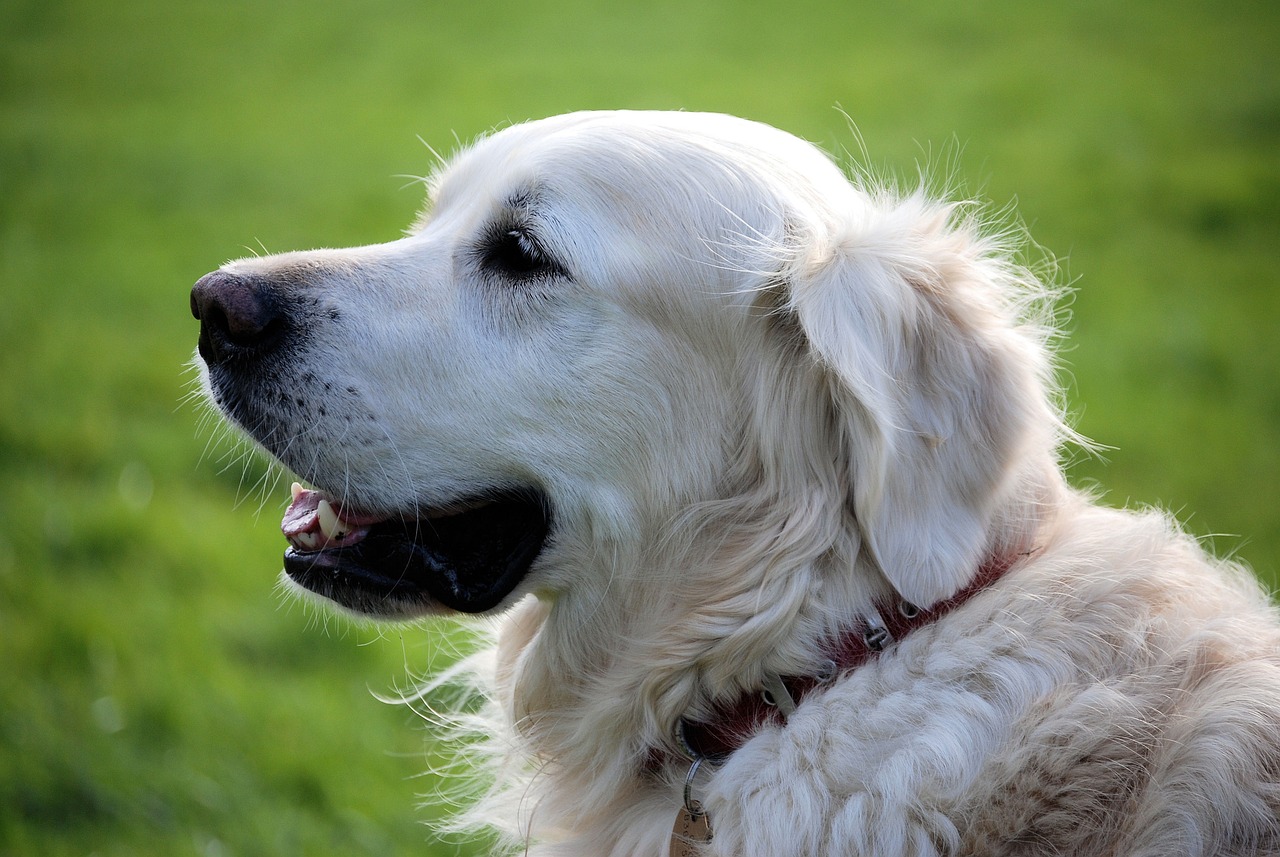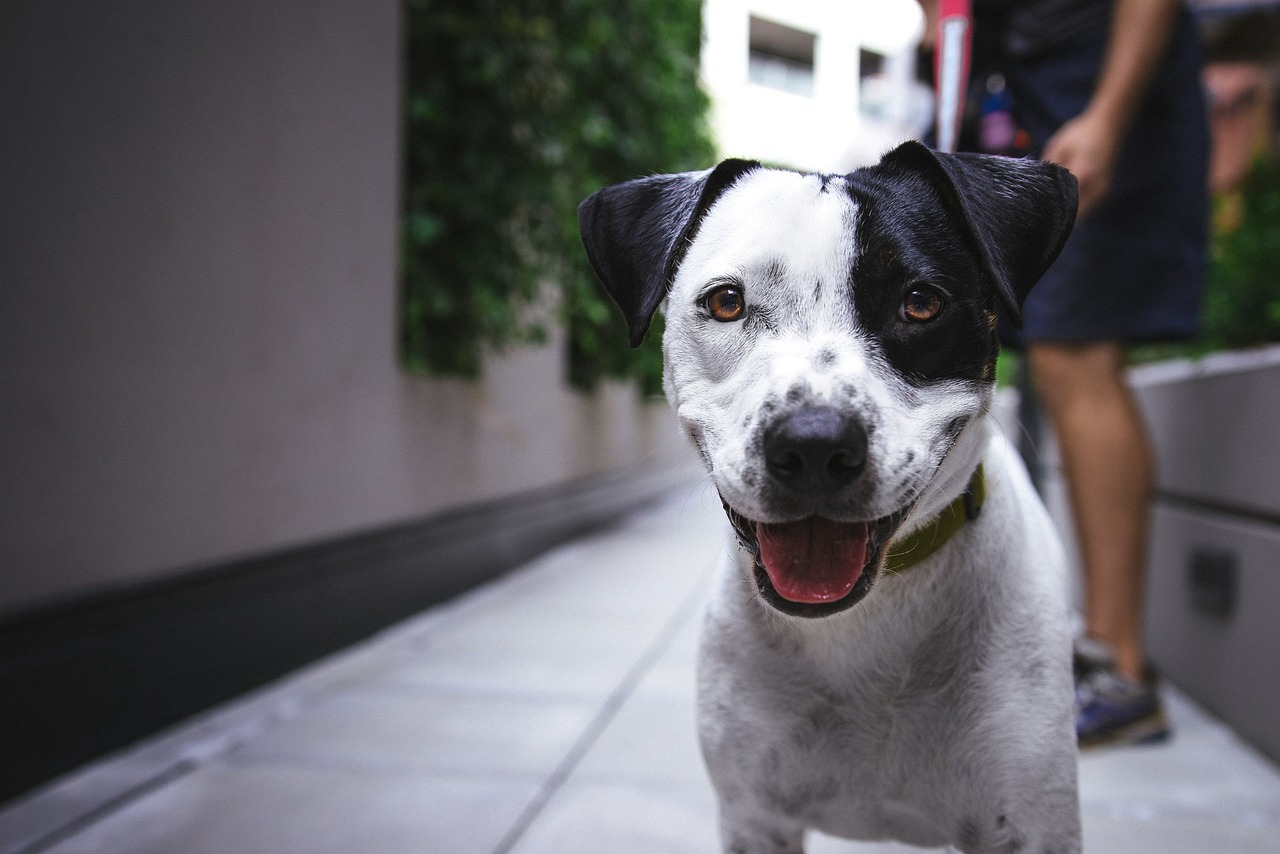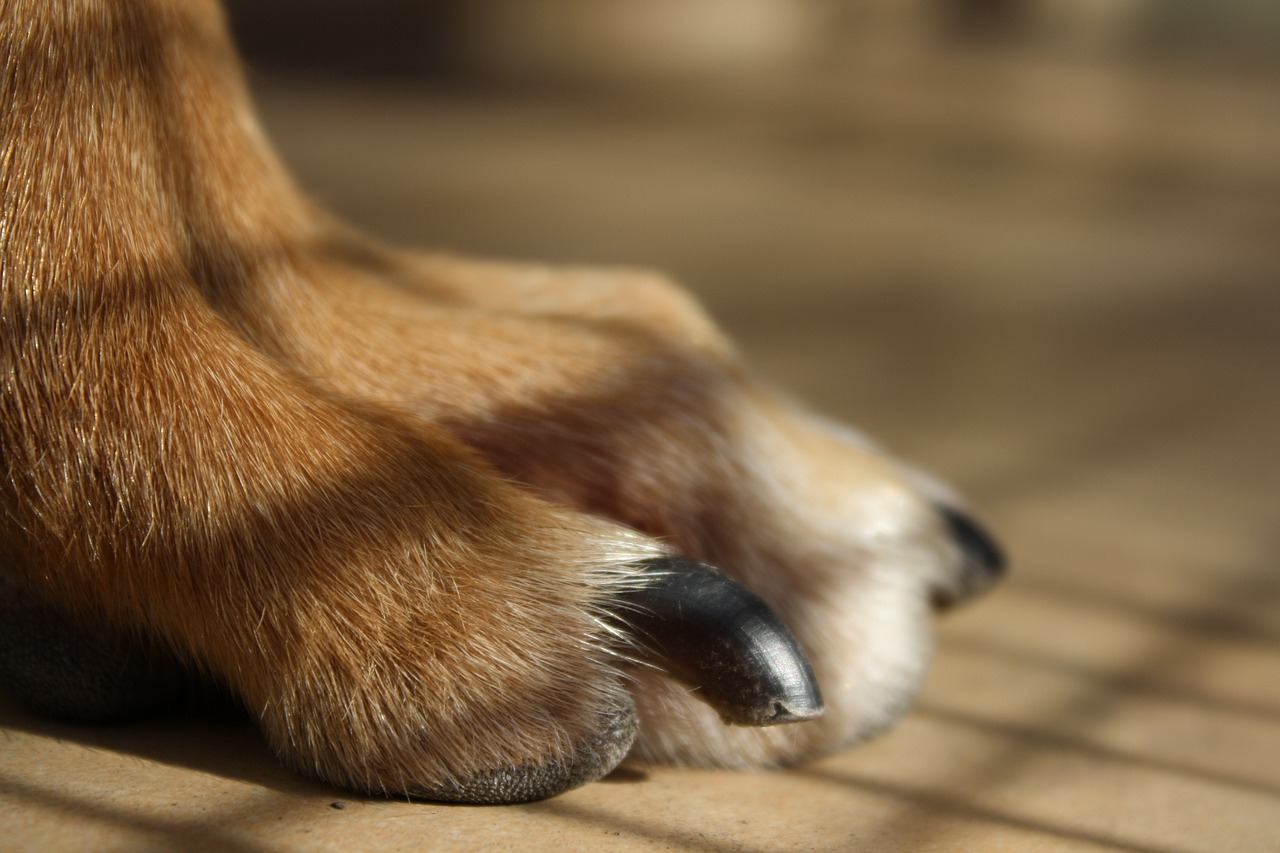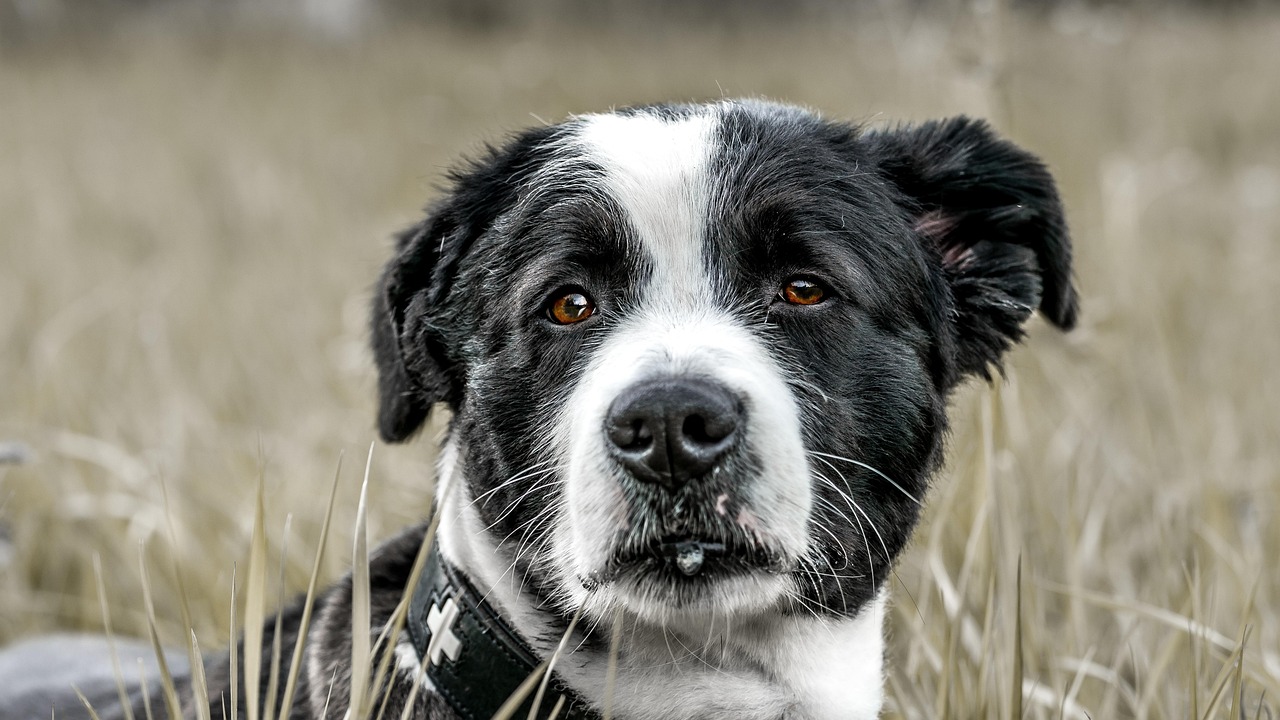This article explores the prevention and treatment of dog bite scars, offering insights into their causes, healing processes, and effective management strategies for long-term skin health.
Understanding Dog Bite Scars
Dog bite scars can arise from various injury severities. Understanding how these scars form is essential for effective treatment and prevention. Proper post-incident care can significantly influence the outcome and appearance of scars.
Immediate Care After a Dog Bite
Timely and appropriate care following a dog bite is crucial in minimizing scarring. Below are the essential steps to take:
- Cleaning the Wound: Thoroughly cleaning the wound is vital to prevent infection. Use clean water and mild soap to rinse the area.
- Choosing the Right Cleaning Solution: Opt for antiseptics like hydrogen peroxide or iodine, but consult a healthcare professional for the best option.
- When to Seek Medical Attention: If the wound is deep, bleeding excessively, or shows signs of infection (redness, swelling), seek medical help immediately.
Understanding Scar Formation
Scarring is a natural part of the healing process. The body produces collagen to repair damaged skin, which can lead to different types of scars based on the severity of the injury.
Types of Dog Bite Scars
Dog bite scars can vary widely. Here are some common types:
- Hypertrophic Scars: Raised and red, these scars often improve over time with proper care.
- Keloid Scars: These extend beyond the original wound site and may require specialized treatments for management.
Preventing Long-Term Skin Damage
Prevention is key to avoiding long-term skin damage. Consider the following strategies:
- Proper Dog Training and Socialization: Responsible pet ownership can significantly reduce the likelihood of aggressive behavior.
- Understanding Dog Behavior: Recognizing stress signals in dogs can help prevent bites.
Effective Treatments for Dog Bite Scars
Several treatments are available for dog bite scars, including:
- Topical Treatments: Creams and ointments can aid in healing and reducing scar visibility.
- Laser Therapy: A modern approach that can significantly improve the appearance of scars.
Emotional Impact of Dog Bite Scars
The presence of scars can affect self-esteem. It’s essential to address the emotional aspects:
- Building Self-Esteem: Emphasize self-acceptance and seek support from friends or groups.
- Seeking Professional Help: Counseling can be beneficial for those struggling with the psychological effects of scars.
Conclusion: Moving Forward After a Dog Bite
Recovering from a dog bite involves both physical and emotional healing. By understanding prevention and treatment options, individuals can take proactive measures to ensure better outcomes.
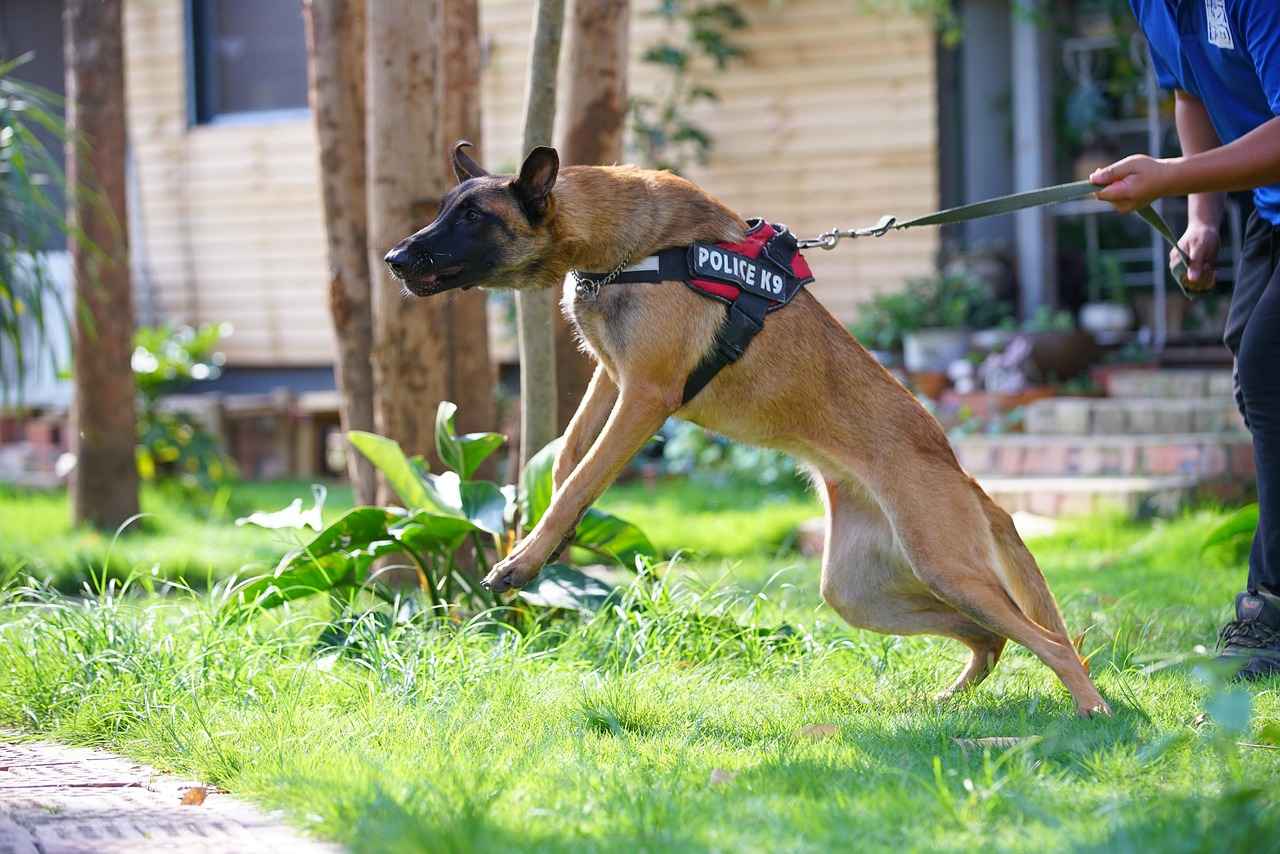
Understanding Dog Bite Scars
Dog bite scars can result from varying degrees of injury, ranging from minor abrasions to severe lacerations. Each type of injury can lead to different healing processes and scar formations. Understanding how these scars develop is crucial for effective treatment and prevention. Proper care following an incident can significantly influence the long-term appearance of the scar.
When a dog bites, the skin undergoes a natural healing response, which involves several stages:
- Inflammation: This initial stage occurs immediately after the injury, where the body sends white blood cells to the affected area to prevent infection.
- Proliferation: New tissue forms during this phase, as the body works to close the wound and repair the skin.
- Remodeling: The final stage can last for months to years, where the scar matures and changes in texture and color.
Several factors can influence the severity of scarring, including:
- Depth of the wound: Deeper injuries are likely to result in more pronounced scars.
- Location: Areas of the body that move frequently, like joints, may scar more noticeably.
- Age and skin type: Younger skin tends to heal more effectively, while certain skin types may be more prone to keloids.
To minimize the risk of scarring, it is essential to seek prompt medical attention after a dog bite. Proper cleaning and care of the wound can significantly reduce the likelihood of severe scarring. Additionally, understanding the healing process allows individuals to take proactive steps in managing their scars effectively.
In summary, dog bite scars can vary greatly in appearance and severity based on the nature of the injury and the care received. By understanding the factors that contribute to scar formation, individuals can take steps to ensure proper healing and minimize long-term skin damage.

Immediate Care After a Dog Bite
is crucial for minimizing the risk of scarring and promoting effective healing. When a dog bite occurs, the first few moments can significantly influence the outcome of recovery. Here are the essential steps to follow:
- Stay Calm: It’s important to remain calm to assess the situation and the severity of the injury.
- Control the Bleeding: Apply gentle pressure with a clean cloth or bandage to stop any bleeding. If bleeding is severe, elevate the injured area.
- Clean the Wound: Rinse the bite area under lukewarm water for at least 5-10 minutes. Use mild soap to cleanse the skin around the wound thoroughly, avoiding any harsh chemicals.
- Apply an Antiseptic: After cleaning, apply an antiseptic solution to prevent infection. Common options include hydrogen peroxide or iodine solutions. Ensure the antiseptic is suitable for skin application.
- Cover the Wound: Use a sterile bandage or dressing to cover the wound, protecting it from dirt and bacteria.
- Monitor for Infection: Keep an eye on the wound for signs of infection, such as increased redness, swelling, or pus. If any of these symptoms occur, seek medical attention immediately.
- Seek Medical Help: If the bite is deep, bleeding does not stop, or if the dog was unvaccinated, seek professional medical care promptly.
By taking these immediate steps, you can significantly reduce the risk of complications and promote better healing of the affected area. Remember, timely intervention is key to preventing long-term skin damage and ensuring a smoother recovery process.
Cleaning the Wound
Thoroughly cleaning a dog bite wound is essential for preventing infection and promoting healing. Immediate and proper care can significantly reduce the risk of complications, including scarring. Below are the best practices and materials needed for effective wound cleaning.
| Step | Description | Materials Needed |
|---|---|---|
| 1. Assess the Wound | Before cleaning, examine the wound for severity. If it’s deep or bleeding heavily, seek medical attention. | N/A |
| 2. Wash Your Hands | Always start by washing your hands thoroughly with soap and water to prevent introducing bacteria. | Soap, Water |
| 3. Rinse the Wound | Gently rinse the wound under lukewarm running water to remove dirt and debris. | Lukewarm Water |
| 4. Use a Cleaning Solution | Apply a mild antiseptic solution to the wound. Avoid hydrogen peroxide as it can damage tissue. | Antiseptic Solution (e.g., saline) |
| 5. Dry the Area | Gently pat the area dry with a clean cloth or sterile gauze. | Clean Cloth or Gauze |
| 6. Apply a Bandage | Cover the wound with a sterile bandage to protect it from further injury and infection. | Sterile Bandage |
After cleaning, keep an eye on the wound for any signs of infection, such as increased redness, swelling, or discharge. If any of these symptoms occur, it is crucial to seek medical attention promptly.
In conclusion, effective wound cleaning is a vital step in the healing process following a dog bite. By following these best practices and using the right materials, you can help ensure a better outcome and minimize the risk of long-term complications.
Choosing the Right Cleaning Solution
is a crucial step in the healing process after a dog bite. The choice of antiseptic can significantly influence recovery and the potential for scarring. In this section, we will explore various cleaning solutions, their benefits, and drawbacks, helping you make an informed decision.
| Cleaning Solution | Pros | Cons |
|---|---|---|
| Hydrogen Peroxide | Effective against bacteria, easy to find | Can damage healthy tissue, may delay healing |
| Isopropyl Alcohol | Quick drying, strong antiseptic properties | Can cause irritation, painful on open wounds |
| Saline Solution | Gentle on wounds, promotes healing | Less effective against certain bacteria |
| Antiseptic Creams (e.g., Neosporin) | Moisturizes wound, reduces infection risk | Can cause allergic reactions, may not penetrate deep wounds |
When selecting a cleaning solution, consider the following factors:
- Severity of the Wound: Deeper wounds may require more potent antiseptics.
- Personal Sensitivities: Always check for allergies to specific ingredients.
- Consultation with Healthcare Professionals: When in doubt, seek advice from a medical professional.
In conclusion, the right cleaning solution can play a pivotal role in preventing infection and promoting healing after a dog bite. By weighing the pros and cons of various antiseptics, you can make a choice that supports effective recovery and minimizes the risk of long-term skin damage.
When to Seek Medical Attention
When it comes to dog bites, understanding when to seek medical attention is essential for ensuring proper healing and preventing complications. While not all bites require professional care, certain signs can indicate the need for immediate medical intervention.
Firstly, if the bite breaks the skin, it is crucial to monitor the wound closely. A puncture or laceration, even if it appears minor, can lead to infection. Signs of infection include:
- Redness around the wound
- Swelling or increased warmth
- Pus or discharge
- Fever or chills
Additionally, if the bite is deep or located on sensitive areas such as the face, hands, or joints, medical attention is advisable. These areas are more prone to complications and may require stitches or specialized care to minimize scarring.
Another critical factor is the vaccination status of the dog. If the dog is unknown or unvaccinated, it is imperative to consult a healthcare professional to assess the risk of rabies. Rabies is a serious viral infection that can be fatal if not treated promptly.
Moreover, individuals with compromised immune systems or pre-existing health conditions should seek medical advice even for seemingly minor bites. Their bodies may not respond to infections as effectively, increasing the risk of complications.
In conclusion, while many dog bites can be treated at home, being aware of the signs that necessitate professional help is vital. Always err on the side of caution and consult a healthcare provider if there are any doubts about the severity of a dog bite.
Understanding Scar Formation
Scarring is a natural part of the body’s healing process that occurs after an injury, such as a dog bite. When the skin is damaged, the body initiates a complex biological response to repair the tissue. This process involves several stages, including hemostasis, inflammation, proliferation, and remodeling.
During the inflammatory phase, the body sends white blood cells to the site of injury to prevent infection and clear out debris. This is followed by the proliferative phase, where new tissue forms. Collagen, a protein that provides structure to the skin, is produced in excess during this phase, which can lead to the formation of scars. The final stage is the remodeling phase, where the collagen is reorganized, and the scar matures over time, usually becoming less noticeable.
Several factors influence the severity and appearance of scars:
- Type of Injury: Deeper wounds typically result in more significant scarring.
- Location: Areas of the body that experience more movement, such as joints, may develop more pronounced scars.
- Age: Younger skin tends to heal more quickly but may also scar more prominently.
- Skin Type: Individuals with darker skin tones may be more prone to hyperpigmentation and keloid scars.
- Aftercare: Proper wound care can greatly reduce the likelihood of severe scarring.
Understanding these mechanisms can help individuals take proactive steps in their healing process. For instance, keeping the wound clean and moisturized can promote better healing and minimize scar formation. Additionally, consulting with healthcare professionals for advanced treatments may be beneficial for those concerned about the appearance of their scars.
In conclusion, while scarring is a natural outcome of the healing process, knowledge about the biological mechanisms and influencing factors can empower individuals to manage their healing better and reduce the risk of severe scarring.

Types of Dog Bite Scars
Dog bite scars can vary significantly in their appearance and characteristics, each requiring tailored treatment approaches. Understanding the different types of scars is essential for effective management and care. Below, we categorize the various forms of dog bite scars and provide insights into their unique features.
| Type of Scar | Characteristics | Treatment Options |
|---|---|---|
| Hypertrophic Scars | Raised, red scars that remain within the boundaries of the original wound. | Silicone gel sheets, corticosteroid injections, and laser therapy. |
| Keloid Scars | Thick, raised scars that extend beyond the original site of injury. | Surgical removal, corticosteroid injections, and radiation therapy. |
| Atrophic Scars | Depressed scars that can appear sunken or pitted. | Dermal fillers, microneedling, and laser resurfacing. |
| Contracture Scars | Scars that tighten and restrict movement, often resulting from deep wounds. | Physical therapy, skin grafts, and surgical intervention. |
Each type of scar presents its own challenges and requires specific treatment strategies. For instance, hypertrophic scars may improve with the use of silicone gel sheets, while keloid scars often necessitate more invasive interventions. Understanding these differences allows for a more effective approach to treatment and can significantly enhance the healing process.
In conclusion, recognizing the type of dog bite scar is crucial for implementing the right treatment plan. Always consult with a healthcare professional to determine the best course of action tailored to individual needs.
Hypertrophic Scars
are a common outcome of skin injuries, particularly those that heal improperly or are subjected to tension. These scars appear as raised, thickened areas of skin and often exhibit a red or purple coloration. Understanding the formation of hypertrophic scars is essential for effective treatment and management.
Hypertrophic scars develop when the body produces too much collagen during the healing process. This overproduction is typically a response to injury, surgery, or trauma, leading to a scar that is raised above the surrounding skin. Unlike keloid scars, hypertrophic scars remain confined to the original wound site and may improve over time, but they can be persistent and sometimes cause discomfort.
To minimize the visibility of hypertrophic scars, several treatment options are available:
- Silicone Gel Sheets: These have been shown to flatten and soften hypertrophic scars when applied consistently over time.
- Pressure Therapy: This involves applying pressure to the scar, which can help reduce its size and improve its appearance.
- Corticosteroid Injections: Injecting corticosteroids directly into the scar can help reduce inflammation and flatten the raised tissue.
- Laser Therapy: This modern treatment uses focused light to reduce redness and improve the texture of the scar.
- Surgical Revision: In some cases, surgical options may be considered to remove or revise the scar, though this should be approached with caution.
In conclusion, while hypertrophic scars can be frustrating, understanding their formation and exploring various treatment options can significantly improve their appearance. Always consult with a healthcare professional to determine the best course of action for your specific situation.
Keloid Scars
are a type of abnormal scar that can develop after skin injuries, including surgeries, acne, and even minor cuts. Unlike typical scars, keloids can extend beyond the original wound site, often becoming larger over time. Understanding their unique characteristics is essential for those prone to keloid formation, as early intervention can significantly improve management outcomes.
These scars are formed when the body produces an excess of collagen during the healing process. This overproduction leads to thick, raised scars that can be itchy or painful. Factors such as genetics, skin type, and the location of the injury can influence the likelihood of keloid development. Individuals with darker skin tones are often more susceptible to keloids, making awareness and prevention crucial.
Effective management strategies for keloid scars include:
- Silicone Gel Sheets: These are often recommended as a first-line treatment. They can help flatten and soften keloids over time.
- Corticosteroid Injections: Administered by a healthcare professional, these injections can reduce inflammation and flatten the scar.
- Laser Therapy: This method uses focused light to improve the appearance of keloids. It can reduce redness and flatten the scar.
- Surgical Removal: In severe cases, surgical options may be considered, although there is a risk of the keloid returning.
Preventing keloid formation is essential for those at risk. Proper wound care, including keeping the area clean and protected, can minimize the chances of keloid scarring. Additionally, avoiding unnecessary skin trauma and seeking professional advice for any concerns can further aid in prevention.
In conclusion, while keloid scars can be challenging to manage, understanding their characteristics and implementing effective treatment strategies can lead to improved outcomes. If you are prone to keloid formation, consult a dermatologist for personalized advice and treatment options.

Preventing Long-Term Skin Damage
Preventing long-term skin damage from dog bites is essential for maintaining overall skin health. Awareness and preventive measures can significantly reduce the risk of scars and other complications. Here are some practical tips to help minimize the risk of dog bites and ensure the skin remains healthy:
- Educate Yourself and Others: Understanding dog behavior is crucial. Learn to recognize signs of aggression or fear in dogs, such as growling, baring teeth, or a stiff posture. Share this knowledge with family and friends to promote safety.
- Proper Dog Training: Training your dog to behave appropriately around people and other animals can prevent aggressive incidents. Consider enrolling your pet in obedience classes and socializing them with various environments and individuals.
- Supervise Interactions: Always supervise children and unfamiliar adults when they interact with dogs. This supervision helps prevent accidental bites and promotes safe behaviors.
- Use Protective Gear: If you are working with dogs, consider wearing protective clothing, such as long sleeves and gloves, to minimize the risk of bites.
- Know the Dog: Before approaching a dog, ask the owner for permission. Understanding the dog’s temperament and history can help you gauge whether it is safe to interact.
- Keep Your Distance: If a dog appears agitated or stressed, it is best to keep your distance. Avoid sudden movements or loud noises that could provoke a dog.
- Regular Vet Visits: Ensure that your dog is healthy and up-to-date on vaccinations. Regular veterinary care can help identify any behavioral issues early on.
By implementing these strategies, you can significantly reduce the risk of dog bites and promote a safer environment for both humans and dogs. Remember, prevention is always better than cure, and taking proactive steps can lead to healthier skin and a more harmonious relationship with our canine companions.
Proper Dog Training and Socialization
are essential components in fostering well-adjusted pets and significantly mitigating aggressive behavior. Responsible pet ownership plays a crucial role in preventing incidents such as bites, ensuring both the safety of the dog and those around it.
When dogs are trained effectively, they learn to respond to commands and behave appropriately in various situations. This training not only enhances their obedience but also builds their confidence, reducing anxiety and fear that can lead to aggression. Socialization, on the other hand, exposes dogs to different environments, people, and other animals, helping them to develop a well-rounded temperament.
- Start Early: Begin training and socialization during the puppy stage, as this is a critical period for behavioral development.
- Positive Reinforcement: Utilize positive reinforcement techniques such as treats and praise to encourage desirable behaviors.
- Controlled Environments: Introduce your dog to new experiences gradually and in controlled settings to prevent overwhelming them.
- Regular Interaction: Schedule regular playdates or visits to dog parks to help your dog interact with others safely.
In addition to training, it is vital for dog owners to recognize the signs of stress or discomfort in their pets. Understanding canine body language can help prevent situations that may lead to aggressive reactions. For instance, if a dog is showing signs of fear, such as cowering or growling, it is crucial to remove them from the stressful environment rather than forcing interaction.
Ultimately, responsible pet ownership involves a commitment to ongoing training and socialization. By investing time and effort into these practices, dog owners can significantly reduce the likelihood of aggressive behavior, fostering a safer environment for everyone.
Understanding Dog Behavior
is essential for any dog owner or enthusiast. Recognizing the signs of stress or aggression in dogs can significantly help in preventing bites and ensuring a harmonious relationship between humans and their canine companions. This section provides valuable insights into canine behavior and how to effectively interpret their body language.
Dogs communicate primarily through their body language. Understanding this language is crucial in identifying when a dog feels threatened or anxious. Here are some common signs of stress or aggression:
- Tail Position: A low, wagging tail may indicate uncertainty, while a stiff, high tail can signify alertness or aggression.
- Ear Position: Ears pinned back against the head often indicate fear, whereas ears perked up can show curiosity or aggression.
- Body Posture: A dog that is cowering or trying to make itself smaller is likely feeling threatened. Conversely, a dog standing tall with a stiff body may be preparing to confront a perceived threat.
- Facial Expressions: A relaxed face with soft eyes indicates comfort, while a dog showing bared teeth or a wrinkled muzzle is a clear sign of aggression.
- Vocalizations: Growling, barking, or whining can all indicate a dog’s emotional state. Understanding the context of these sounds is vital for interpretation.
It’s important for dog owners to observe these behaviors and respond appropriately. For instance, if a dog shows signs of stress, such as panting or pacing, it may be best to remove them from the stressful situation. On the other hand, if aggression is displayed, giving the dog space and avoiding confrontation is crucial.
Training and socialization play a key role in helping dogs manage their stress and aggression levels. Providing a safe and structured environment can help dogs feel more secure, reducing the likelihood of aggressive behaviors. By recognizing and interpreting canine body language, dog owners can foster a safer and more positive interaction with their furry friends.

Effective Treatments for Dog Bite Scars
Dog bite scars can be a lasting reminder of a traumatic experience, but various treatment options are available to help manage and reduce their appearance. Understanding these treatments is essential for anyone looking to improve their skin’s appearance after a dog bite.
Topical Treatments
Topical treatments are often the first line of defense against dog bite scars. These include:
- Silicone Gel Sheets: These are effective in flattening and softening scars. They work by hydrating the scar tissue and creating a protective barrier.
- Scar Creams: Over-the-counter creams containing ingredients like onion extract or vitamin E can help improve the texture and color of scars.
- Hydrocortisone Creams: These can reduce inflammation and redness associated with raised scars, particularly hypertrophic scars.
Laser Therapy
Laser therapy is a cutting-edge treatment option that has gained popularity for scar management. It works by targeting the scar tissue with focused light, which helps to:
- Reduce scar thickness
- Improve skin texture
- Promote collagen remodeling
Different types of lasers, such as ablative and non-ablative lasers, are used depending on the scar type and severity.
Microneedling
This minimally invasive procedure involves the use of fine needles to create micro-injuries in the skin, stimulating the body’s natural healing process. Microneedling can enhance the absorption of topical treatments and improve overall skin texture.
Surgical Options
In cases of severe scarring, surgical options may be necessary. These can include:
- Scar Revision Surgery: This procedure involves removing the scar tissue and stitching the skin back together, which can lead to a less noticeable scar.
- Skin Grafting: For extensive scarring, a skin graft may be used to cover the scarred area with healthy skin from another part of the body.
In conclusion, while dog bite scars can be distressing, there are various effective treatments available. From topical solutions to advanced laser therapies and surgical options, individuals have multiple avenues to explore for scar management. Consulting with a dermatologist or a plastic surgeon can help determine the best course of action tailored to specific needs.
Topical Treatments
play a crucial role in the healing process of scars, especially those resulting from dog bites. These treatments can significantly aid in scar reduction and promote skin restoration, making them an essential part of post-injury care. In this section, we will explore various popular creams and ointments, evaluating their effectiveness in minimizing the appearance of scars.
When it comes to topical treatments, there are several options available, each with its unique properties and benefits. Understanding these can help individuals choose the right product for their specific needs.
- Silicone Gel Sheets: These are often recommended for scar management. They work by hydrating the scar tissue and providing a protective barrier that can reduce scar formation.
- Hydrogel: This treatment is ideal for keeping the scar area moist, which can aid in the healing process. Hydrogel is particularly beneficial for hypertrophic scars.
- Vitamin E Creams: While the effectiveness of vitamin E in scar treatment is debated, many people find that it helps to improve the overall appearance of scars.
- Topical Steroids: These can be effective in reducing inflammation and minimizing the appearance of raised scars, such as keloids.
- Onion Extract Gels: Products containing onion extract, like Contractubex, are popular for their potential to improve scar texture and color.
It’s important to note that while topical treatments can be beneficial, their effectiveness varies from person to person. Factors such as the age of the scar, skin type, and individual healing processes all play a role in how well a treatment will work.
In conclusion, incorporating into your scar management plan can enhance healing and improve the appearance of scars. It is advisable to consult with a healthcare professional to determine the most suitable options for your specific situation.
Laser Therapy
has emerged as a revolutionary treatment option for those dealing with the aftermath of dog bite scars. This innovative approach utilizes focused light energy to target scar tissue, promoting healing and skin restoration. Understanding how laser technology works and its numerous benefits can empower individuals seeking effective solutions for their scars.
Laser therapy operates by emitting concentrated beams of light that penetrate the skin, stimulating the body’s natural healing processes. The energy from the laser is absorbed by the scar tissue, leading to a reduction in its appearance. This process encourages the production of new, healthy skin cells while simultaneously breaking down the dense collagen fibers that contribute to the scar’s texture and color.
One of the most significant advantages of laser therapy is its minimally invasive nature. Unlike traditional surgical methods, which may involve extensive downtime and recovery, laser treatments often require little to no anesthesia and result in minimal discomfort. Patients can typically return to their daily activities shortly after the procedure, making it a convenient option for scar management.
Additionally, laser therapy can be tailored to suit various types of scars, including hypertrophic and keloid scars. By adjusting the laser’s wavelength and intensity, practitioners can customize the treatment to address the specific characteristics of each scar, enhancing the overall effectiveness.
Moreover, many patients report significant improvements in their scar appearance after just a few sessions, with results often becoming more noticeable over time as the skin continues to heal. This gradual improvement can lead to increased self-confidence and a more positive body image for those affected by dog bite scars.
In conclusion, laser therapy stands out as a cutting-edge solution for individuals seeking to minimize the impact of dog bite scars. Its effectiveness, convenience, and adaptability make it a valuable option in the realm of scar treatment, offering hope and improved outcomes for many.

Emotional Impact of Dog Bite Scars
The emotional impact of dog bite scars can be profound and far-reaching. Living with visible scars not only serves as a reminder of a painful incident but can also affect an individual’s self-esteem and mental well-being. Understanding these psychological aspects is crucial for those affected, as it can guide them towards effective coping strategies.
Many individuals experience feelings of shame or embarrassment due to their scars. This can lead to social withdrawal and a reluctance to engage in activities that involve showing their skin. The constant reminder of the incident may trigger anxiety or fear, making it essential to address these emotional challenges head-on.
To help cope with the psychological burden of living with dog bite scars, consider the following strategies:
- Building a Support Network: Surrounding oneself with understanding friends and family can provide emotional comfort. Sharing experiences with those who have faced similar challenges can foster a sense of community and reduce feelings of isolation.
- Practicing Self-Compassion: It’s important to be kind to oneself. Acknowledging that scars are a part of one’s journey can help in accepting one’s appearance. Engaging in positive self-talk can also improve self-image.
- Seeking Professional Help: Therapy or counseling can be invaluable for those struggling with the emotional aftermath of dog bites. Mental health professionals can provide coping mechanisms and strategies to manage anxiety and depression.
- Engaging in Creative Outlets: Activities such as art, music, or writing can serve as therapeutic outlets. Expressing feelings through creativity can facilitate healing and self-discovery.
Ultimately, while the physical scars may remain, addressing the emotional toll is vital for recovery. By taking proactive steps towards mental well-being, individuals can reclaim their confidence and lead fulfilling lives despite their scars.
Building Self-Esteem
is a crucial aspect of personal development, especially for individuals coping with physical scars. These marks, whether from accidents, surgeries, or dog bites, can significantly impact one’s self-image and confidence. However, there are effective strategies to help individuals embrace their appearance and cultivate a positive self-view.
Firstly, acknowledging feelings about scars is essential. It’s natural to feel self-conscious or anxious about visible marks. By recognizing these emotions, individuals can begin to address them constructively. Journaling can be a powerful tool for self-reflection, allowing individuals to articulate their feelings and track their progress over time.
Next, surrounding oneself with supportive people can foster a positive environment. Friends and family who provide encouragement and love can help reinforce a more positive self-image. Engaging in open conversations about scars can also demystify the experience and reduce feelings of isolation.
Additionally, practicing self-care is vital. This includes maintaining a healthy lifestyle through balanced nutrition, regular exercise, and adequate sleep. Taking care of one’s body can enhance overall well-being and improve self-esteem. Furthermore, exploring hobbies and interests can shift focus from scars to personal achievements and passions.
Another effective strategy is seeking professional help. Therapists or counselors can provide valuable insights and coping mechanisms to deal with feelings related to scars. They can guide individuals through the emotional journey, helping to build resilience and self-acceptance.
Finally, embracing scars as part of one’s story can transform the perception of these marks. Rather than viewing them solely as flaws, individuals can see them as symbols of survival and strength. Sharing personal experiences with others can also inspire and empower those facing similar challenges.
In conclusion, while physical scars may affect self-esteem, they do not define an individual’s worth. By implementing these strategies, one can build confidence, embrace their unique appearance, and lead a fulfilling life.
Seeking Professional Help
is a crucial step for individuals coping with the emotional aftermath of dog bite incidents. The scars left behind can be not only physical but also deeply psychological, affecting one’s self-esteem and overall quality of life. In this section, we will explore the significance of mental health support in the healing process, focusing on how professional counseling can provide valuable assistance.
Many individuals may experience feelings of anxiety, depression, or post-traumatic stress after a dog bite. These emotional responses are natural, yet they can become overwhelming and hinder recovery. Professional counselors are trained to help individuals navigate these feelings, offering coping strategies and emotional support tailored to their unique experiences.
Engaging in therapy can lead to several benefits:
- Enhanced Coping Mechanisms: Counselors can teach clients effective strategies to manage anxiety and stress.
- Improved Self-Esteem: Therapy can help individuals rebuild their self-image and confidence, which may be affected by visible scars.
- Safe Space for Expression: Professional counseling provides a confidential environment where individuals can express their feelings without judgment.
- Understanding and Acceptance: Counselors can assist clients in understanding their emotional responses and help them accept their experiences.
Moreover, therapy can also facilitate a deeper understanding of the incident, allowing individuals to process their emotions and experiences fully. This understanding is essential for moving forward and can lead to personal growth and resilience.
In conclusion, seeking professional help is a vital component of recovery for those affected by dog bites. By addressing both the emotional and physical scars, individuals can embark on a path toward healing and regain control over their lives.

Conclusion: Moving Forward After a Dog Bite
Recovering from a dog bite is a multifaceted process that encompasses both physical and emotional healing. The aftermath of a dog bite can leave lasting effects, not only on the skin but also on one’s mental well-being. Understanding the importance of a comprehensive recovery strategy is essential for individuals who have experienced such an event.
First and foremost, physical healing involves proper wound care and management to minimize scarring. Following a dog bite, it is crucial to clean the wound thoroughly and seek medical attention if necessary. This proactive approach can significantly reduce the risk of complications and promote faster healing. Additionally, various treatment options, such as topical ointments and laser therapy, can aid in scar reduction, ensuring that the skin heals as effectively as possible.
On the other hand, the emotional impact of a dog bite should not be underestimated. Individuals may experience feelings of anxiety, fear, or embarrassment due to visible scars. It is important to acknowledge these feelings and seek support when needed. Professional counseling can be beneficial in addressing the psychological aspects of recovery, helping individuals build confidence and cope with any emotional distress associated with their experience.
In conclusion, moving forward after a dog bite requires a balanced approach that prioritizes both physical recovery and emotional well-being. By taking proactive measures for prevention and treatment, individuals can effectively navigate the healing process. Awareness and education about dog behavior can also play a vital role in preventing future incidents. Ultimately, embracing a holistic recovery strategy can lead to a healthier and more resilient future.
Frequently Asked Questions
- What should I do immediately after a dog bite?
First things first, clean the wound with soap and water. It’s crucial to remove any dirt or bacteria to prevent infection. After that, apply a sterile bandage and keep an eye on it for signs of infection.
- When is it necessary to seek medical attention for a dog bite?
If the bite is deep, bleeding heavily, or shows signs of infection like redness, swelling, or pus, you should definitely see a doctor. Also, if the dog was unknown or unvaccinated, a medical professional can help assess the risk of rabies.
- How can I prevent dog bite scars?
Preventing scars starts with proper care of the wound. Keep it clean, moisturized, and protected. Additionally, understanding dog behavior and training your pet can help avoid bites in the first place.
- What are the treatment options for dog bite scars?
There are several options, including topical treatments like silicone gels, laser therapy, and even surgical options for severe scars. It’s best to consult with a dermatologist to find the right treatment for your specific scar type.
- Can dog bite scars affect my emotional well-being?
Absolutely. Visible scars can impact self-esteem and lead to emotional distress. Seeking support from friends, family, or even a professional can help you cope with these feelings.


